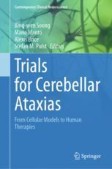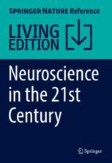Search
Search Results
-
Clinical Trials in Fragile X-Associated Tremor/Ataxia Syndrome
Fragile X-associated tremor/ataxia syndrome (FXTAS) is a rare, adult-onset neurodegenerative movement disorder occurring in some carriers of a 55–200...
-
Progressive Ataxia and Palatal Tremor Is Not Associated with IgLON5 Antibodies: Results From Two Cases
Progressive ataxia and palatal tremor (PAPT) and anti-IgLON5 disease share possible clinical presentations. Furthermore, both have been associated to...

-
Recent advances in CGG repeat diseases and a proposal of fragile X-associated tremor/ataxia syndrome, neuronal intranuclear inclusion disease, and oculophryngodistal myopathy (FNOP) spectrum disorder
While whole genome sequencing and long-read sequencing have become widely available, more and more focuses are on noncoding expanded repeats. Indeed,...

-
Prevalence of Fragile X-Associated Tremor/Ataxia Syndrome in Patients with Cerebellar Ataxia in Japan
The presence of fragile X mental retardation 1 ( FMR1 ) premutation has been linked to patients with a certain type of cerebellar ataxia, the fragile...

-
Neuropsychological changes in FMR1 premutation carriers and onset of fragile X-associated tremor/ataxia syndrome
BackgroundCarriers of the FMR1 premutation are at increased risk of develo** a late-onset progressive neurodegenerative disease, fragile...
-
Small Molecule Screening Discovers Compounds that Reduce FMRpolyG Protein Aggregates and Splicing Defect Toxicity in Fragile X-Associated Tremor/Ataxia Syndrome
Expansion of CGG trinucleotide repeats in 5′ untranslated region of the FMR1 gene is the causative mutation of neurological diseases such as fragile...

-
Characterization of the Cerebrospinal Fluid Proteome in Patients with Fragile X-Associated Tremor/Ataxia Syndrome
Fragile X-associated tremor/ataxia syndrome (FXTAS), first described in 2001, is a neurodegenerative and movement disorder, caused by a premutation...

-
Syndrome of Irreversible Lithium-Effectuated Neurotoxicity (SILENT): A Preventable Cerebellar Disorder
We report a case study of a 60-year-old man with bipolar disorder on stable lithium treatment who developed severe toxicity while admitted to ICU...

-
X-Linked Ataxias
X-linked ataxias are phenotypically and genotypically heterogeneous. Clinically, ataxia in X-linked ataxias can be the only manifestation, the...
-
Fragile X Syndrome and Premutation Disorders
Fragile X syndrome (FXS) is the most common inherited cause of intellectual disability (ID) and the most common known single-gene cause of autism...
-
An Update on the Adult-Onset Hereditary Cerebellar Ataxias: Novel Genetic Causes and New Diagnostic Approaches
The hereditary cerebellar ataxias (HCAs) are rare, progressive neurologic disorders caused by variants in many different genes. Inheritance may...

-
Fragile X Syndrome and Premutation Disorders
Fragile X syndrome (FXS) is the most common inherited cause of intellectual disability (ID) and the most common known single-gene cause of autism...
-
The Frequency of Intermediate Alleles in Patients with Cerebellar Phenotypes
Cerebellar syndromes are clinically and etiologically heterogeneous and can be classified as hereditary, neurodegenerative non-hereditary, or...

-
“The Red Flags” in Clinical Approach to Acute Ataxia—the Experience in Cohort of 76 Children
The aim of our study is to define the most frequent etiology, clinical presentation, and predictive factors of outcome in children with acute ataxia...

-
Fragile X-associated tremor ataxia syndrome with co-occurrent progressive supranuclear palsy-like neuropathology
Co-occurrence of multiple neuropathologic changes is a common phenomenon, most prominently seen in Alzheimer’s disease (AD) and Parkinson’s disease...

-
Ataxia Rating Scales Reflect Patient Experience: an Examination of the Relationship Between Clinician Assessments of Cerebellar Ataxia and Patient-Reported Outcomes
Ataxia rating scales are observer administered clinical outcome assessments (COAs) of the cerebellar motor syndrome. It is not known whether these...

-
Cerebellar Degeneration Associated with HIV Infection
Objectives . To describe the features of the clinical picture and estimate the incidence of HIV-associated cerebellar degeneration in patients with...
-
Genetic insights into PHARC syndrome: identification of a novel frameshift mutation in ABHD12
BackgroundMutations in ABHD12 (OMIM: 613,599) are associated with polyneuropathy, hearing loss, ataxia, retinitis pigmentosa, and cataract (PHARC)...

-
X-Linked Ataxias
X-linked ataxias are phenotypically and genotypically heterogeneous. Clinically, ataxia may be the sole, the dominant, or a nondominant phenotypic...
-
Advances on the Mechanisms and Therapeutic Strategies in Non-coding CGG Repeat Expansion Diseases
Non-coding CGG repeat expansions within the 5′ untranslated region are implicated in a range of neurological disorders, including fragile...

